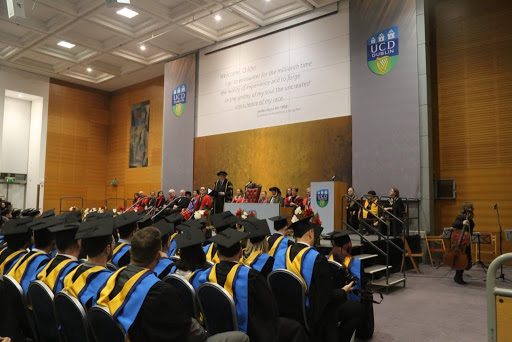The Class of 2020 may be remembered as the class of COVID-19, but the current pandemic should not be their only concern. Ireland’s newest graduates will enter an environmentally scarred world, with an economic model where the ideals that their parents and grandparents could aspire to – the permanent pensionable job and the prospect of buying a home have become close to impossible.
Borrowed to the Hilt
When this lockdown finally ends, we will not be able to flick the economic switch and quickly return to normality. The coronavirus pandemic has already triggered a collapse in consumer demand and forced many businesses to close or significantly reduce operations. The Irish economy is heading for a recession that is forecast to be deeper than the 2008 financial crisis with the Central Bank predicting a €22 billion dip in the State’s finances and up to 500,000 job losses.
Nation-states and supranational bodies will have to rely on fiscal measures to minimise the long-term impact of the crisis. KBC predicts that fiscal respite measures including income supports, benefits and credit guarantees could cost the exchequer almost €15 billion. Additional fiscal stimulus programs designed to reboot the economy could amount to a further €10-15 billion.
Before this health crisis, Ireland’s Gross National Debt totalled €216 billion (Central Bank). This equated to a colossal €42,000 for every person in Ireland or nearly €90,000 for every person working. There are undeniable benefits to running moderate budget deficits as part of expansionary fiscal policy. However, the class of 2020 and their counterparts will inherit the third-highest debt burden on per capita basis in the world and one that severely hinders their fiscal prosperity. The state has paid more than €60 billion euros in interest on the national debt over the past decade in an ultra-low interest rate environment. This cost of servicing this debt will inhibit spending on vital social infrastructure.
The Housing Conundrum
Irish people have yearned to own their own home for generations. However, a combination of restrictive mortgage lending, exorbitant rents and the financialisaton of Irish housing stock has eroded its’ affordability for young people.
The CSO estimate that the average price of a second-hand house in Ireland in 1980 was €30,900 (£1= €1.27). Forty years later, the average house in Ireland costs €267,000. This represents an increase of 864%. Inflation in the same period equalled 245%. The €30,900 that your grandparents used to purchase their home would be worth just €75,705 in today’s money.
Incomes have also failed to track house prices. The average industrial wage in 1980 was €123.43 equating to a yearly salary of €6,418. The average industrial wage was €790.03 in Q4 2019 equating to a yearly salary of €41,082. This represents an increase of 640%. Houses now sell at a multiple of 6.5 times gross salary rather than the 4.8 times salary seen in 1980. In Dublin, the current house to income multiple is closer to 8.
The problem is exacerbated by restrictive lending policies. In 2015 the Central Bank introduced lending restrictions to prevent overborrowing. First-time buyers are confined to loans of 3.5 times their gross salaries and a 90% loan to value. This means that the average worker with a yearly salary of €41,082 can only borrow for a house worth €160,000 (€41,000 X 3.5)/.90) – far below the €237,000 average national cost. No amount of avocado avoiding or nightclub eschewing can make up that gap.
Saving itself is quite challenging. Young Dubliners must pay the 5th highest rents in Europe as opposed to increasing their equity in a capital asset if they were paying off a mortgage. This has the potential to exclude a generation from homeownership and the main form of wealth accumulation practised by their ancestors.
More Burdens to Shoulder
The class of 2020 form part of the most educated generation in history but are on course to become less prosperous, than their predecessors. Graduates will enter a challenging job market. Disturbingly, many of them will never be able to retire. KPMG found that the ratio of working-age people to pensioners will decline from 5:1 to 2:1 by 2035. This will present significant funding challenges and a forecasted deficit of up to €335 billion over the next 50 years.
The OECD has stated that Ireland’s pension system is “unsustainable” and commented that retirement age should reflect increased life expectancy. This sparked controversy in the general election forcing FG & FF to row back from a financially prudent position to increase the age from 66 to 67. The grey vote will happily defend the State Pension system, one that guarantees an adequate income in retirement. However, this assistance simply will not exist when young people come to retire. Young people will have to fund their own retirement but are still expected to pay for others.
Politicians will be slow to spend political capital fighting for a generation with fragmented party loyalties and low electoral participation. Younger voters must unite or fear sleepwalking into a debt and pensions time-bomb and all while living in rented accommodation.
Jack O’Grady – Politics Writer

